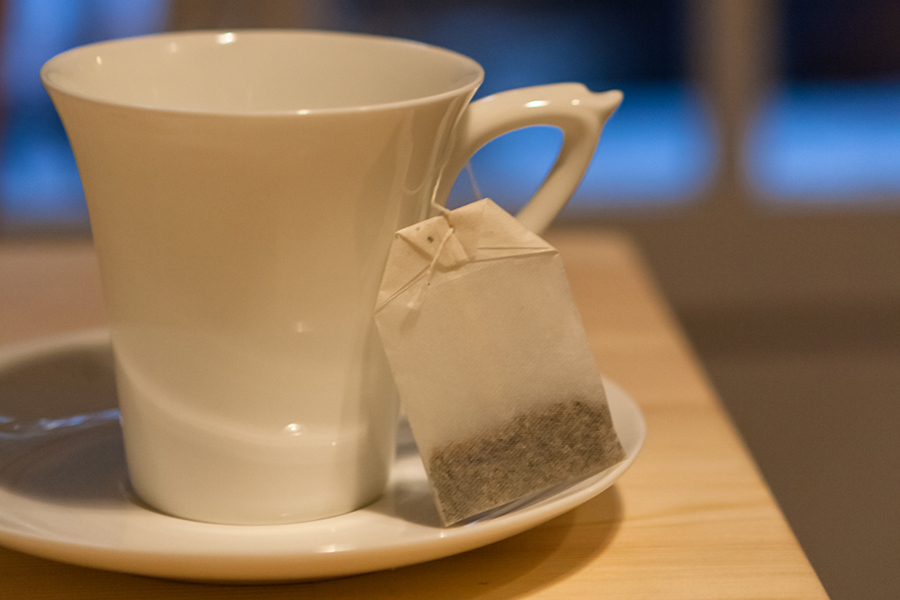By Ellie Krieger Special to The Washington Post | Greensboro.com
If you are suffering from seasonal scaliness, you’re not alone. Dry skin is a common side effect of winter. As temperatures plunge, so does the humidity in the air, creating an environment that essentially sucks the moisture out of our body’s protective outer layer, resulting in that uncomfortable tightening, itchiness and flakiness.
There are things you can do from the outside-in to prevent moisture loss, including keeping showers brief and tepid, slathering on a rich cream right after patting yourself dry and running a house humidifier. But you can also optimize your skin’s natural moisture-lock system by keeping it well-nourished from the inside out.
Drink (and eat) for hydration
We typically don’t sweat as much in the winter as we do in the warmer months, so it’s easy to forget that we still need plenty of fluids. Staying well hydrated helps keep all of our bodily systems functioning smoothly, so at a minimum, you should aim for the recommended daily intake of 91 ounces of liquid for women and 125 ounces for men, amounts that include not only water but all nonalcoholic liquids consumed.
If drinking plain water leaves you cold this time of year, try a hot beverage, such as herbal tea. Also, since about 20 percent of our fluid intake comes from the food we eat, make the most of water-rich edibles that are especially good in the winter, including cozy vegetable soups and the wide variety of seasonal citrus. These foods not only pump up your water intake, they have other possible skin-nourishing benefits as well (more on that soon).
Get more omega-3
Just as we can apply a nice, rich body cream as a protective coating on the outside of our skin to combat parching winter elements, we can also help our bodies build an impermeable layer from the inside.
Our skin’s effectiveness as a barrier, locking water in rather than letting it evaporate into the dry air, depends upon our intake of two types of fats, omega-6 and omega-3. These essential fats “help the lipid membrane that is on the outside of the skin to hold more moisture,” board-certified dermatologist and author Jeanette Jacknin says. Dhaval Bhanusali, a board-certified dermatologist with a private practice in New York City agrees: Essential fats “are the building blocks for healthy skin cells in general — they form a protective shield, reinforcing the skin’s barrier — and we need to get them from our diet.”
Since most of us get plenty of omega-6, it’s a smart strategy to focus on upping our intake of omega-3. The best source is fish, because it contains the most potent forms of the fat (EPA and DHA). Fatty fish such as salmon has the most omega-3 (more than 1,000 milligrams in 3 ounces cooked). But amounts in other fish add up too, so enjoy a variety, including tuna, sardines, halibut, cod, trout, shrimp, oysters. It’s all good.
There is no official ideal daily intake of omega-3 — but recommendations for healthy people typically range from 250 mg to 500 mg a day, so eating at least two seafood meals a week will likely cover you. You can get omega-3 fat from plant foods, too (albeit the less potent ALA form). Flax seeds, hemp seeds, walnuts and their oils, as well as chia seeds are especially good sources.
Eat colorful produce
Eating plenty of fruit and vegetables is another habit consistently linked in the research with healthier skin.
“The science is still so early, but we have been seeing the benefits of eating a balanced diet with healthy fruit and vegetables with our patients for years,” Bhanusali says.
Two nutrients bountiful in richly hued fruit and vegetables that researchers have begun to home in on are carotenoids (including beta carotene, a form of vitamin A, lutein, zeaxanthin and others) and vitamin C. They act as antioxidants, protecting cells from damage, and they are essential for the skin’s growth and repair.
Getting more than you need for basic, good nutrition won’t necessarily make your skin more hydrated, but “antioxidants in fruits and vegetables help act as fighters within skin cells to prevent damage, which means less potential water loss,” Bhanusali, the dermatologist, says. Beta carotene imparts a yellow-orange color to food — think sweet potatoes, squash, carrots, mangos — but it, and other carotenoids, are also concentrated in dark greens like kale and spinach. So back to the vegetable soups I mentioned earlier — besides being hydrating, they can also supply a hefty dose of antioxidants.
Water-rich in-season citrus is anotherway to get vitamin C, which Jacknin says “is a very powerful antioxidant that also plumps up the skin’s collagen — which is the structure of the skin.” Other vitamin C-packed produce includes bell peppers, broccoli, tomatoes and berries.
Eating more citrus, vegetables, seafood, nuts and seeds and drinking plenty of fluids are habits that not only may help you avoid dry skin this winter, they are good for every cell in your body. After all, healthy-looking skin is considered an outward reflection of a healthy inside, not only in winter, but year-round.
Read the original article on Greensboro.com.
You can find more skin and nutrition tips in Shield HealthCare’s community:
- How to Protect Your Skin in the Sun
- Seniors and Nutrition
- Vitamin D and Your Skin
- Build Bone Strength: Foods with Calcium and Vitamin D
- Injuries: Treating Minor Scrapes and Burns
Shield HealthCare | Stronger with Shield
















